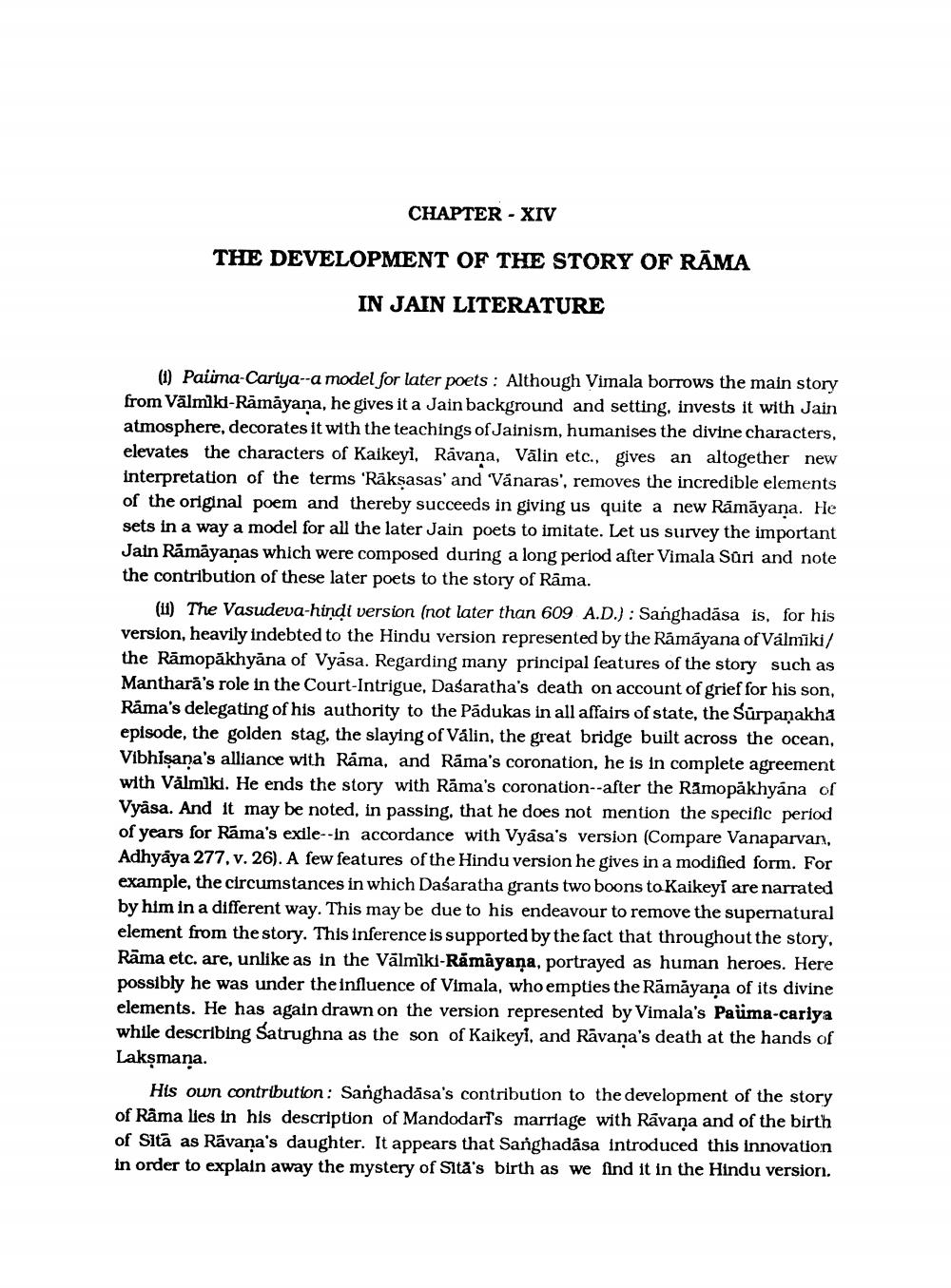________________
CHAPTER - XIV
THE DEVELOPMENT OF THE STORY OF RĀMA
IN JAIN LITERATURE
(1) Paiima-Carlya--a model for later poets : Although Vimala borrows the main story from Vālmiki-Ramayana, he gives it a Jain background and setting, invests it with Jain atmosphere, decorates it with the teachings of Jainism, humanises the divine characters, elevates the characters of Kaikeyi, Rāvana, Vālin etc., gives an altogether new interpretation of the terms 'Raksasas' and 'Vanaras', removes the incredible elements of the original poem and thereby succeeds in giving us quite a new Rāmāyana. He sets in a way a model for all the later Jain poets to imitate. Let us survey the important Jain Rāmāyanas which were composed during a long period after Vimala Sûri and note the contribution of these later poets to the story of Rama.
(11) The Vasudeva-hindi version (not later than 609 A.D.) : Sanghadása is, for his version, heavily indebted to the Hindu version represented by the Rāmāyana of Valmīki/ the Rāmopākhyāna of Vyasa. Regarding many principal features of the story such as Manthara's role in the Court-Intrigue, Dasaratha's death on account of grief for his son, Ráma's delegating of his authority to the Pádukas in all affairs of state, the Surpanakha episode, the golden stag, the slaying of Válin, the great bridge built across the ocean, Vibhişana's alliance with Ráma, and Rāma's coronation, he is in complete agreement with Vālmīki. He ends the story with Rāma's coronation--after the Ramopākhyāna of Vyasa. And it may be noted, in passing, that he does not mention the specific period of years for Rāma's exile--In accordance with Vyasa's version (Compare Vanaparvan, Adhyâya 277, v. 26). A few features of the Hindu version he gives in a modified form. For example, the circumstances in which Daśaratha grants two boons to Kaikeyi are narrated by him in a different way. This may be due to his endeavour to remove the supernatural element from the story. This inference is supported by the fact that throughout the story, Rāma etc. are, unlike as in the Vālmīki-Ramayana, portrayed as human heroes. Here possibly he was under the influence of Vimala, who empties the Rāmāyaṇa of its divine elements. He has again drawn on the version represented by Vimala's Paüma-carlya while describing Satrughna as the son of Kaikeyi, and Rāvana's death at the hands of Lakşmana.
His own contribution: Sanghadāsa's contribution to the development of the story of Rama lies in his description of Mandodarl's marriage with Ravana and of the birth of Sitā as Rāvana's daughter. It appears that Sanghadása introduced this innovation in order to explain away the mystery of Sita's birth as we find it in the Hindu version.




